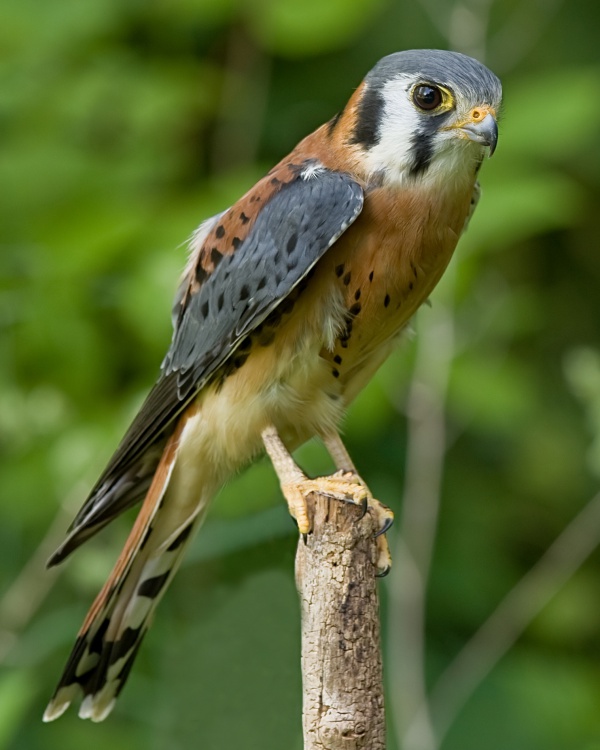Facts About American kestrel
The American kestrel is the smallest and most common falcon in North America, comparable in size to a blue jay or a mourning dove. With seventeen subspecies adapted to various environments across the Americas, these birds exhibit noticeable differences in size and plumage between the sexes.
These agile hunters perch and ambush their prey, which includes insects, lizards, mice, and small birds. They nest in a variety of locations and typically lay three to seven eggs, with both parents sharing incubation duties.
The breeding range of the American kestrel spans from Alaska to South America. Northern populations migrate south for the winter. Interestingly, although they are classified as kestrels, DNA studies reveal they are more closely related to larger American falcons. Their taxonomy is based on appearance and behavior, and their scientific name is *Falco sparverius*.
Kestrels are popular in falconry, especially for beginners, due to their adaptability to urban settings and effectiveness in hunting small prey. Their vocalizations include "klee" "whine" and "chitter" with different sounds produced by males and females.
These birds thrive in diverse habitats, from grasslands to urban areas, and are widely distributed throughout the Americas. Their diet, hunting techniques, reproductive habits, and responses to stress are well-documented, demonstrating their adaptability to various conditions and threats, including environmental contaminants.
However, some kestrel subspecies are experiencing population declines due to habitat loss. Conservation efforts, such as the American Kestrel Partnership, work to monitor and protect these birds. While their unique traits make them suitable for falconry, it's important to consider their size, hunting style, and training needs. Captive breeding is common, but it is illegal to possess wild kestrels without proper permits, as they are protected under the Migratory Bird Treaty Act.
For those interested in learning more, recommended books include "American Kestrels in Modern Falconry" by Matthew Mullenix and "The American Kestrel: Falcon of Many Names" by Roland H. Wauer.

 Brazil
Brazil